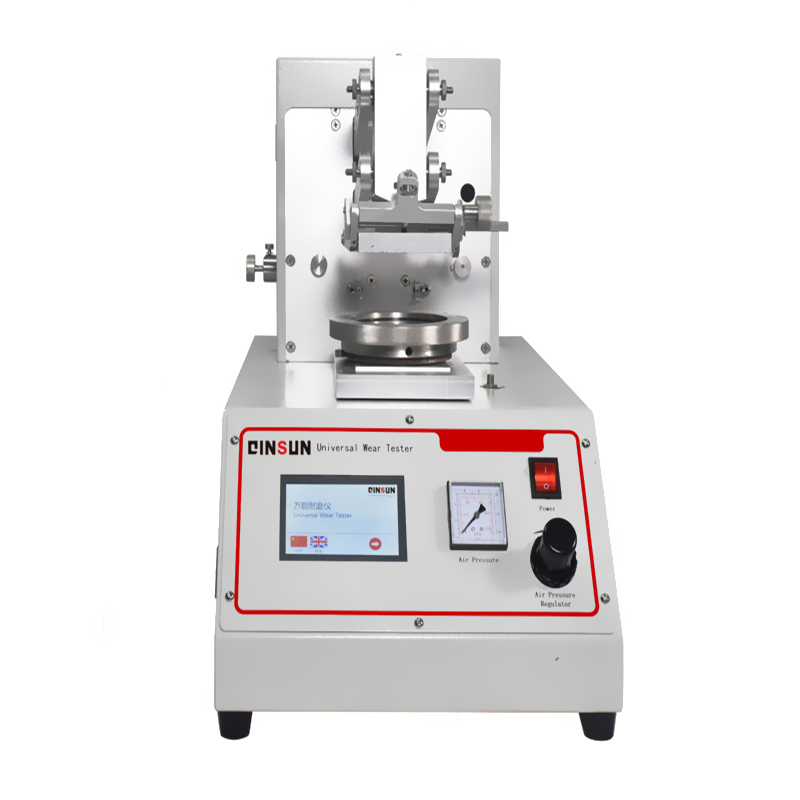Universal Wear Resistance Tester Operation
Advantages and characteristics:
1.Have a strong after-sales service team;
2.Able to handle various issues in a timely and fast manner,relieving customers of any worries they may have;
3.Complete spare parts to solve the problem of long lead times when ordering spare parts;
4.Keep up with industry standards updates and provide textile testing instruments that meet the new standards in a timely manner.

G282 Universal Wear Resistance Tester is equipped with a flat grinding test head(inflatable film friction test method)and a curved grinding test head,as well as the required weights and sandpaper.It can perform wear tests such as flat grinding,curved grinding,edge grinding,edge grinding,frost resistance,edge closing,and pilling.The tested sample can be in a dry state or immersed in water,oil,or other liquids.It can be used for woven fabrics,knitted fabrics,coated fabrics,plush fabrics,socks,felt,non-woven fabrics,etc Deep fabric,yarn,string plastic film,rubber,leather,paper,and various other materials.
Applicable standards:
ASTM D3514 D3885 D3886,AATCC 119/120,FORD EFB 15J2/BN 112-01,etc
Technical parameters:
1.Inner diameter of clamping ring:94 mm;
2.Locking ring height:≤9.5 mm;
3.Speed:120±15/min;
4.Travel:25 mm;
5.Air pressure:62kPa(9psi);
6.External dimensions:330×five hundred×460mm(length×wide×High;
7.Weight:33kg(72lb);
8.Power supply:120/230 V,50/60 Hz,2A/1A
Operation:
1.Firstly,prepare the accessories and test samples;
2.Use a sample wrench to disassemble the fixture;
3.Install the eardrum and sample into the fixture;
4.Tighten and secure the fixture;
5.Fix the abrasive onto the upper fixture;
6.Install weights;
7.Open the instrument and enter the operation interface;
8.Set the number of turns and adjust the air pressure value;
9.The sample expands to a certain height as the air pressure increases;
10.Lower the upper fixture to allow the abrasive to come into contact with the specimen;
11.Press the start button;
12.The abrasive and the sample undergo continuous frictional motion;
13.The sample is worn out and automatically stops;
14.At the end of the experiment,take the sample for analysis and comparison to evaluate the surface wear resistance of the material.

